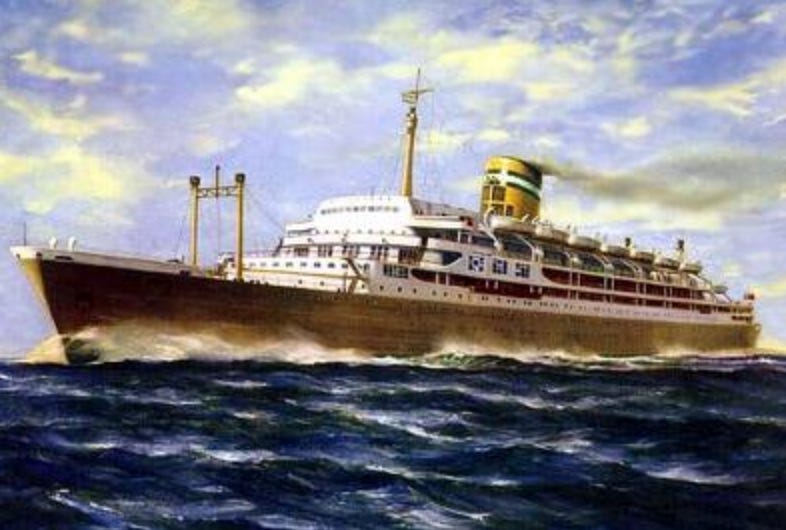While researching my most recent post on Freedom Day in Portugal, I came upon the story of Henrique Galvão. I was intrigued by what I learned, so I wanted to dig deeper.
Backing a Charismatic Leader
Born in Barreiro, a town across the river from Lisbon, in 1895 Henrique Carlos da Mata Galvão was educated at Military School, the Polytechnic School, and the Joinville-le-Pont School in France. As a military officer, he participated in the coup that installed Sidónio Pais in power in 1917. Pais was a charismatic, populist leader who offered great promise. However, his unconstitutional actions to consolidate power led to his assassination in December 1918 and a void that led to 40 years of dictatorship under Salazar.
It was during this time that Galvão rose through the military reaching the rank of Captain. In 1952, Salazar appointed him Chief Inspector of the Portuguese Colonies in Africa.

Worse than Slavery
As one might imagine, the conditions in the African colonies were a bit different than he had been led to believe. The Portuguese had boasted that they provided technical expertise to the local population enabling them to produce more profitable crops. Instead, he found that such expertise was wanting and the crops that were produced were bought below market value by agents that then sold the products at a huge profit.
While slavery had been abolished years before, Salazar created a system that was even worse. Able-bodied men were rounded up and “rented” to mines and plantations. This meant that the “private employer” did not have a vested interest in keeping his “investment” alive.
An Angolan or Mozambican, rented out by the government, who fell ill or who died, was simply sent back by the employer to be replaced free of extra charge. — Martin Page, The First Global Village
As a result, Galvão found that most of the able-bodied fled to South Africa which held great promise … despite apartheid.
Off to Prison
As discussed before, Galvão attempted to report on what he found but his report was confiscated before it could be reviewed. He resigned his post and continued to speak out against the government and the British and US governments that supported Salazar.
By their support of the dictatorship, they have not merely betrayed their own ideal of democracy. That have placed obstacles in the way of Portuguese democrats, trying to achieve liberation. — Henrique Galvão
He was arrested, tortured, found guilty of treason, and sentenced to 19 years. He made several failed attempts to escape from the Trafaria military prison, the Lisbon Penitentiary, and the Peniche jail. After what some believed was an attempt by the secret police to poison him, he was admitted to Santa Maria Hospital under guard in 1955. He remained there until 1959 when he escaped through a bathroom window. He crawled along the seventh-floor ledge to an open window that led to a changing room. There he changed into doctor’s scrubs and walked out of the hospital lobby and into the streets of Lisbon … ultimately finding his way to the Argentinian embassy where his safe passage to Buenos Aires was arranged.
Hijacker
But his opposition did not end there. In January 1961, 24 men boarded a Portuguese luxury liner offering primarily American passengers a Caribbean cruise. Using weapons they had hidden in their luggage they stormed the bridge in the early morning hoping to peacefully take over the Santa Maria. Unfortunately, the officer in charge resisted and was shot. A few crew members were injured, and the Captain of the ship (asleep in his cabin at the time) quickly surrendered. Galvão, who led the first hijacking of a ship after WWII, wanted to shine a light on the brutal dictatorship of Salazar and Franco. He renamed the ship Our Lady of Liberty and set sail for Angola.
Salazar sought the support of the Nato alliance, but most countries ignored him. The British sent two navy frigates and the US a warship and reconnaissance planes. John Kennedy, who was newly elected, looked into the situation and determined that Galvão’s mission was just. After several days, the ship was spotted by the US Navy. Low on fuel, the ship was peacefully escorted to Recife, Brazil where 600 passengers and 300 crew members were freed. Many of the passengers extolled the virtues of Galvão’s cause and Galvão was escorted with honors to the Brazilian national assembly.
Final Note: As some in the States attempt to purge libraries and public school systems of the full history of the United States, I was heartened to read the following on the Museum of Aljube’s website:
The exhibition ATO (DES)COLONIAL aims to contribute to the questioning of the colonial heritage in our country, particularly during the period of dictatorship, and to the valorisation of the experiences of anti-colonial resistance as determining processes for the self-determination and independence of the African peoples, but also for the overthrow of fascism in Portugal.
ATO (DES)COLONIAL invites us to think about approaches necessary to an anti-racist practice, in schools, in public spaces of culture and in society.
May this (DIS)COLONIAL ACT be one more, among others, and generate more anti-colonial and anti-racist thought and action, abolitionist of all forms of violence.
Next Week: up the river and Algarve chimneys.







Thank you so much for your very informative writings. I am thoroughly enjoying them.
Great piece- thank you!